the colour of our hearts is the colour of our city
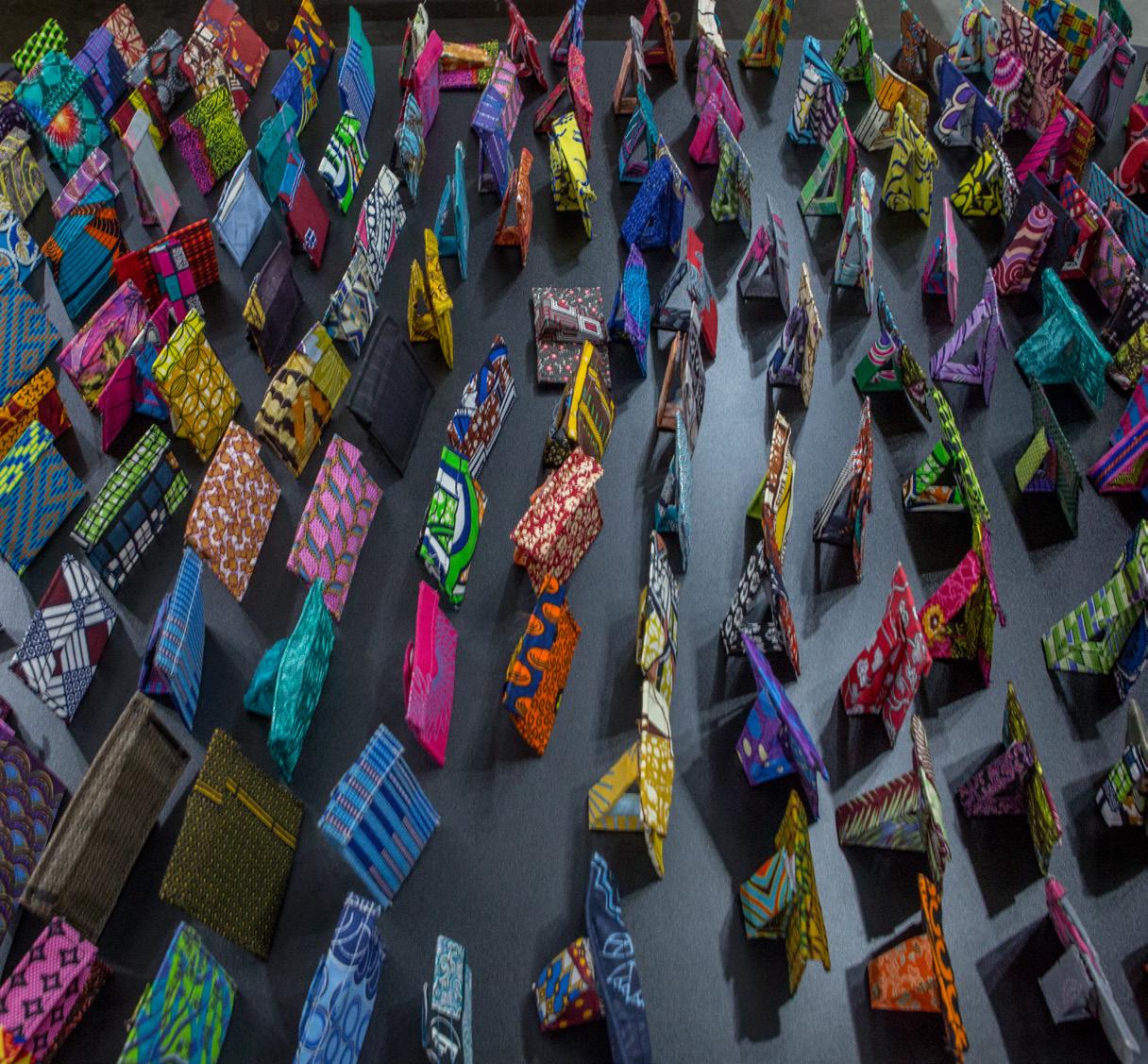


the colour of our hearts is the colour of our city
Written and edited by Amarachi Okafor, Oyindamola Fakeye, and Frank Ugiomoh
Published by ORIE STUDIO
The Colour of our Hearts is the Colour of our City, Lagos City!
© 2021 Amarachi Okafor www.amarachiokafor.art
All rights reserved. The copyright of this publication belongs to the artist. Images rights are also those of the photographer. No part of this book may be used or reproduced in any manner without the written permission of the publisher and the author.
Published by ORIE STUDIO in September 2021 as documentation of the exhibition.
Cover Image: Colour of our Hearts is the Colour of our City, 2015-2019, [from event at CCA, Lagos, 2021]. Photography by Adolphus Opara.
Book and cover design by Zoopark Studio Photography by Adolphus Opara
ISBN 978-0-9573885-1-2
For humanity, for our joy… in full

pre face intro duction installation view the colour of our hearts is the colour of our city : a preview essay by frank ugiomoh installation view a walk through the city by oyindamola fakeye installation view the artist – amarachi okafor acknowledge ments
In a singular way, I am deeply affected by human actions in the world, and to society (people) in the course of history, more so today; the impact of these activities on people; the nature of this impact, and their long/short term ripple effects. These affect my thought processes and go on to get translated into my work, habitually.
Concerned about humanity and our role and place in society, it can feel like my work is often lamentations; at times, I preach Hope and Joy– lifting spirits… When shall we have a delightful living on earth, where there will be no injustice, war, and disease? What is the path to Paradise?1
I adopted text,3 colour (from any source) and embroidery/stitches as my visual language whilst leaning into the fringes of architecture and construction to try and translate my ideas- even when I paint,
I make what I refer to as built or constructed paintings. These have form.
1 1st Raison d’etre in my work 1st core/purpose LONGING FOR A PAR-
I have used containment as idea, metaphor and inspiration2 to question and to point to notions the concept of bag and bagging, even humans as bags, baggers, and baggage.
Words are powerful. I am constantly drawing from this gift of nature and leading others to explore with me this materiality of the written text and the action of writing as an art-making process. I am working also at the crossroads between tactile and ephemeral art forms, looking at the links and relationship between these and triggering situations where words and performativity are tangible materials for making art?
Hence, I actuate performative relational meetings in public, with ordinary people with(in) communities, where we enjoy
ADISE to come where there will be no sadness, pain, injustice. Delight, Joy
2 Material/medium, 1. bagging and embodiment. BAGGING, containment
3 Material/medium, 2 “The words that I speak to you is Power and they are Life” Word is Spirit and Spirit is power. Word is Power and Texts belong within the context of our everyday. EXPLORE WORD/TEXT AND the power thereof…
some chance ephemeral occurrences (artistic and ordinary) that are quite lasting. All of my work is for learning meant to bring me and my audiences to new
Amarachi Okafor’s art practice albeit international is very much rooted in the local. She works from ORIE STUDIO, an art production and research space she had founded, in Abuja, Nigeria. Amarachi’s studies in the field of art rewards her with the following degrees: BA (Painting), 2002; MFA (Sculpture), 2006 (both from University of Nigeria Nsukka); and MA in Curatorial Practice, 2012 from Falmouth University, Cornwall, UK. Practising consistently since 2003, she has shared work spaces at Universal studios and Aina Onabolu studios, Lagos; and had private studios at different times in Nsukka, Umuahia and Abuja- in Nigeria; and in other places around the world. She was recipient of the Unesco Aschberg artists’ award in 2007- leading to a residency at Lademoen Kustnerverksteder [LKV] in Trondheim
knowledge as we are led to searching our hearts and discovering alternative ways of living.
Norway. As well, she was a Commonwealth Foundation Commonwealth Connections recipient in 2009 which supported her travels for research projects and a collaborative exhibition. She has also been granted residencies to Nkd Norway and to Popopstudios, Nassau- Bahamas.
Upon graduating from Falmouth University, Amarachi won the Art Department’s internship scholarship that year.
In 2014, she won the jury prize of the National Art Competition (Nigeria). She has exhibited at Babel Art Space, Norway, Oriel Mostyn Gallery, Wales, Manchester Art Gallery, UK, Jogjarkarta Biennial, Indonesia; and in recent years she has taken to making public art projects with audiences in galleries and alternative art spaces, a unique endeavour that she refers to as relational public art.
Project Concept, 2021 tour CCA, Lagos
The Colour of Our Hearts Is the Colour of Our City, 2015–2019, …, 2021 and ongoing…
I am excited about the many layers of this piece as it grows, it gives me great joy! Please join me.
The Colour of Our Hearts Is the Colour of Our City, 2015–2019 is people focused, and affectionately themed so.
This one-piece exhibition is participatory (with audiences) and performative (by the audience and the artist).
The physical sculpture installation tries to activate to the senses, a city setting with pouches in seating as people living in clusters, on streets, and within closed and open walls.
Cities are made and built by people- all the people in it, not just some. Each one of us is a stakeholder and through our actions or/and inactions, we have the ability to affect the overall feel of our city in some capacity or other.
Cities show culture — our everyday, from popular to whatever other kind of culture, and more. Cities comprise of people: humans as containers, in this case ‘pouches’ who are engaging in relational activities such as writing, playing and having conversations about … what?
The individual responsibility of cities to be better, and to make better…
Using individual bags as objects that aid us to think about the human being as entities that have the capacity to hold and to contain, may we bear in mind that we have the responsibility to be better, and to make better.
How do we think about the choices we make; at the places we ‘contain’ and where we are being ‘contained’ (bags and boxes in themselves are agents of containment and control)? How do we impact? Who am I as a person and how am I making my city, community, immediate spaces better or worse because of my presence in it.
Every exhibition of this piece is part of a prolonged durational relational public activity, until the work is completely activated.
The work aims to continually draw its’ audience into itself to be united with it in growth using the charge of its’ audience. My idea with this line of work is also the intent to make audiences consume art by becoming and being part of art, transacting, having a stake in the piece, engraving it in their memories through participation and performativity; enlightening as well, audiences that would not ordinarily consume or own art.
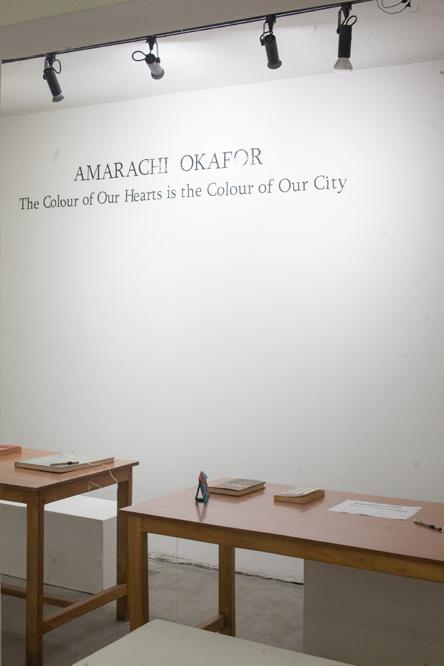
Amarachi Okafor
The Colour of our Hearts is the Colour of our City CCA, Lagos. September 2021

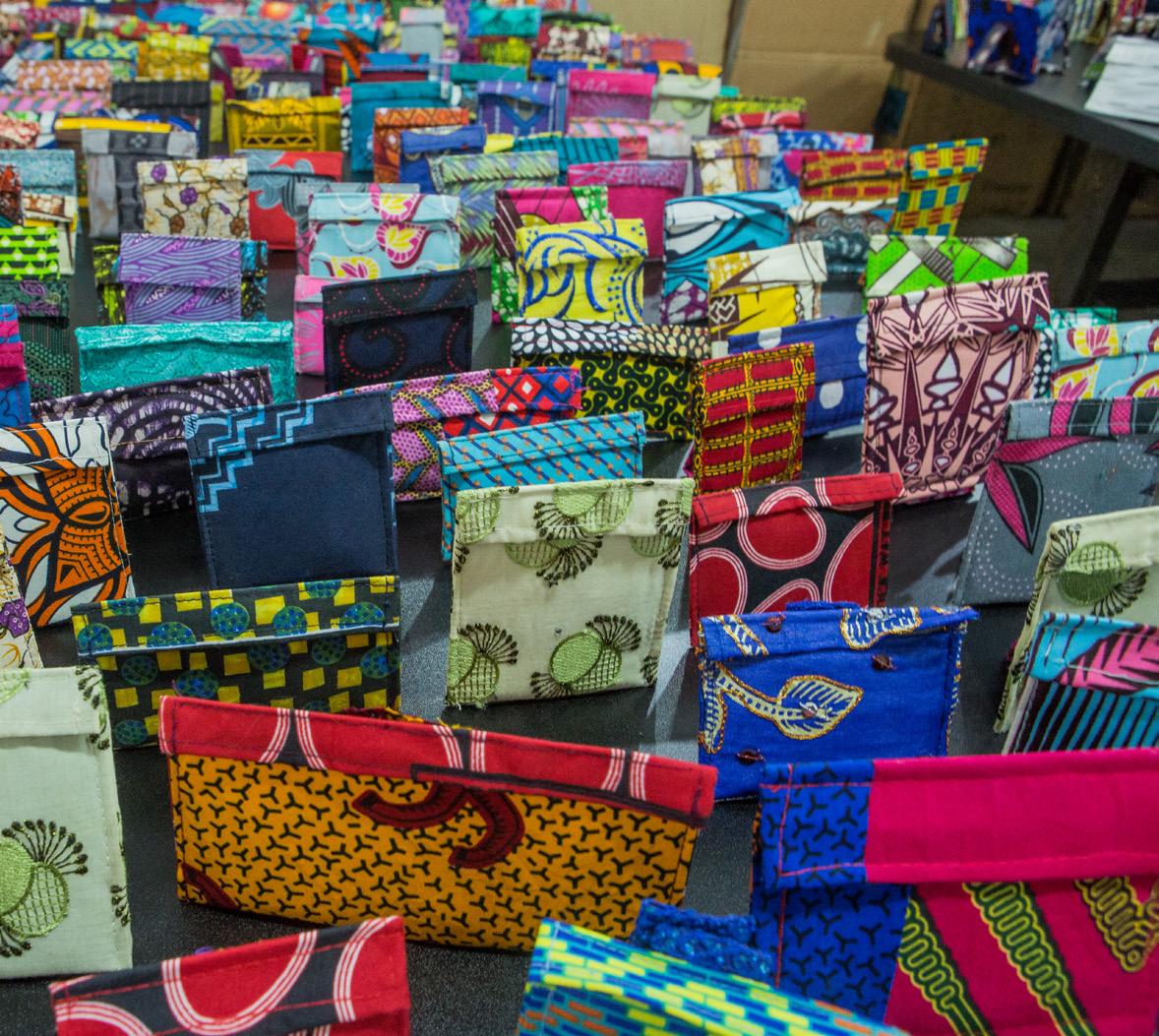


The Colour of our Hearts is the Colour of our City CCA, Lagos. September 2021
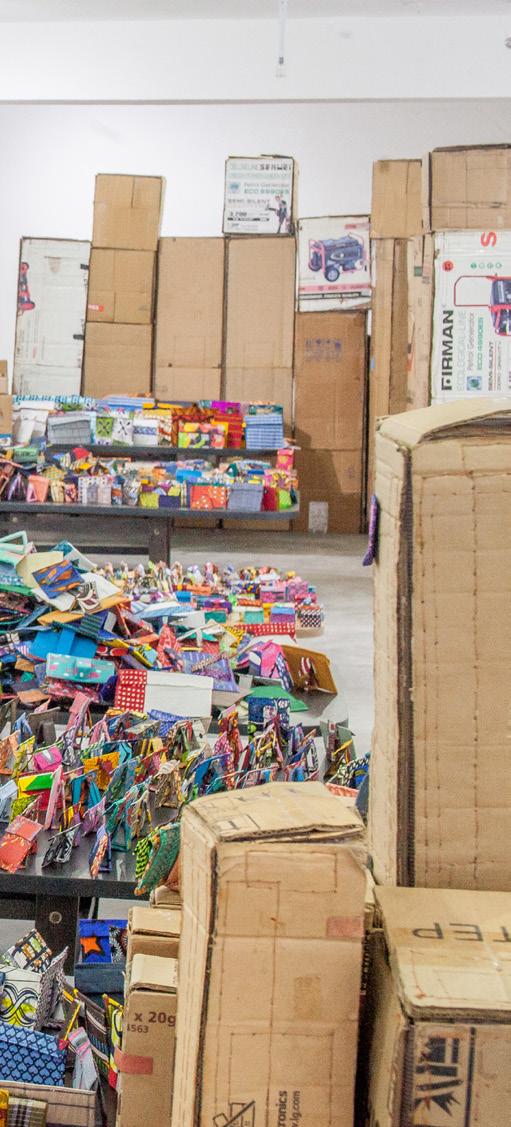

The Colour of our Hearts is the Colour of our City CCA, Lagos. September 2021
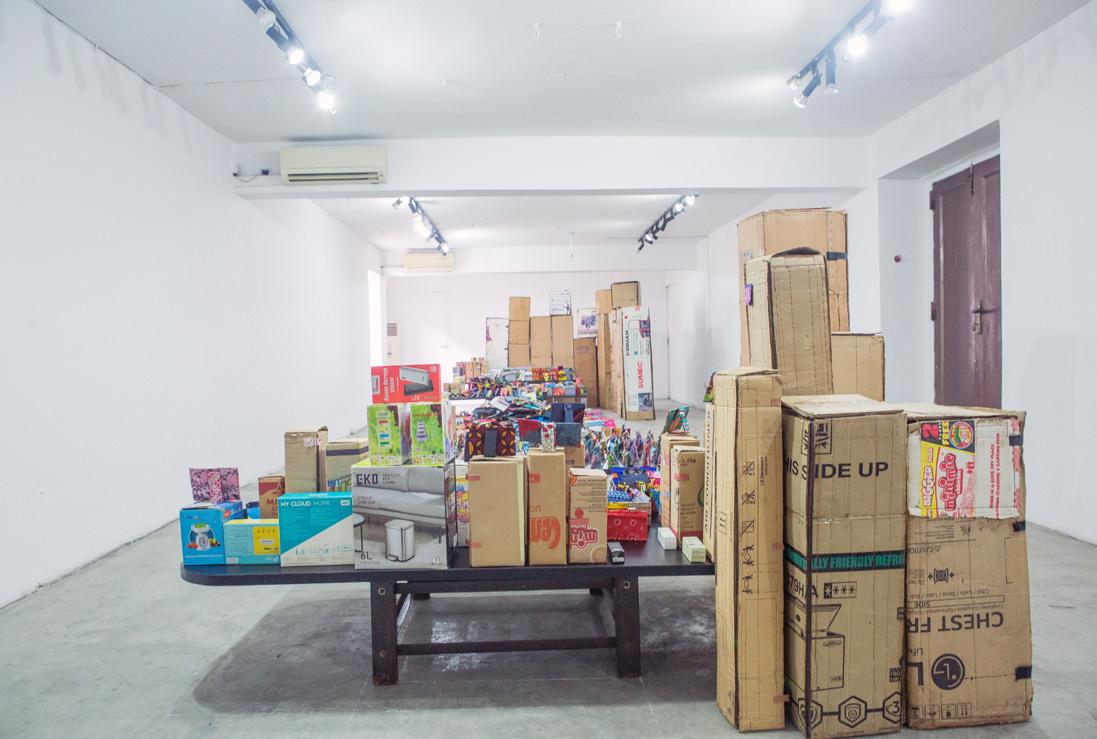
Frank Ugiomoh
Amarachi Okafor is a profound installation artist with years of working knowledge in the genre. Her installations explore the metaphor of negative and positive spaces using containers or sacks with interiorities of value in her design objectives. Often the analogy of space in her work generates superfluous and voluptuous spaces that awe. However, this exposition presents a different tenor in the manipulatable dimensions of space in such ways that allow the lively essences of colour to hold sway. Installations possess their narratives and the context matters. The theme here suggests some communal engagement. Beyond the theme, which acts as an invitation, is the artist’s location in her society.
Being a bohemian is the identity of the modern artist. In the past, artists worked for patrons who catered for them dutifully and guaranteed their productive output. The industrial revolution, which defined the modernism ideology, liberated the visual artist crowning such person oracles. With such latitude and freedom of self-expression, the visual arts have approximated to represent each age’s spirit. What the arts offer to the human community, no matter the form and shape they assume, have been reduced to a single variable a symbol, a metaphor. This trimmed value remains deceptive. In that happenstance that gives room for collective representation and identity comes the charm of the visual arts when in exposition for the encounter.
Frank Ugiomoh Ph.D., is a professor of history of art and theory and Omooba Yemisi Adedoyin Shyllon Professor of Fine Art and Design, University of Port Harcourt
The symbol that the artwork stands for is always a story to be told a rebus. It is not just one story for all, but all for the story. The exhibition narrative, approximating, as it were to a container, is full of enchantments and re-enchantments. In The Relevance of the Beautiful and Other Essays (1986), the German philosopher Hans Georg Gadamer dared to associate the work of art with the idea of play. The first assertion he puts out is the very impossibility of our humanness without play enshrined in it. The element of play in our lives is a product of free impulse. The concept of play is usually not targeted at the player. Otherwise, the play would be absent. In the second instance, the human is not the only one that is given to
play. Animals play also. However, Gadamer distinguishes human play from the play of animals, as he puts it because the human activity of play emerges from a rational conscience and consciousness. Invariably, Gadamer sums up the value of play as the only human activity that brings humanity together. Work, he notes, separates humanity. Hence, in this exhibition that presents as an installation, we are invited to come to play formally. The artist has not minced words about this objective of the presentation. The plane of encounter is with the metaphor Colour of our Hearts Is the Colour of Our City. Two possible planes of encounter are some segregated height above a city landscape or any proximate plane. But the artist has reduced these burdens to the work she has created. The filths and detritus of everyday life have all been vanquished around
the city especially the plastics and the bits of cellophane that self-adorn the cityscape. And one is left with the colours of the rainbow. These dynamic colour configurations birth all other colours of the universe. The rainbow is now known to possess chromatic values and valences in its millionth numbers (thanks to modern technology that allows syntheses of more than a million shades of colours.) Colours enchant and re-enchant. Colours bring illumination and varieties of existential shades into human lives the brilliant colours that droll or the grays that dampen. Colours play incredibly significant roles in our lives. Colour can sway thinking, change actions, and cause reactions. It can exasperate or soothe our persons, elevate our blood pressure, or overturn our craving. When the individual is immersed in the right colour, they can even save on
energy. With colours, our concern becomes the decorated aspects of life, the way and how we live. The installation Colour of our Hearts Is the Colour of Our City conjoins the factors of play in the metaphors of life. The wish here is that as we engage the space of art, play’s identity overwhelms us. The stages set for this play are figural and defined by location. Sprouts and architectonic forms break the flattened nature of this location.
The rhythm of space, forms, and colour come as liberating spectacles in this exhibition. They are made on purpose to enrapture. As a powerful form of communication, colour is irreplaceable. Likewise, the colours visible to the senses in this exhibition elicit reactions and responses. By way of metaphorical teasing, these colours are already in our hearts. They are the colours our inner dwellings are made of. Live it out in play.
Gadamer, Hans-Georg. The Relevance of the Beautiful and Other Essays. Translated by Nicholas Walker, edited with Introduction by Robert Bernasconi, (Cambridge: University Press, 1986).
Live it out, playing it. The play of art is a great play.
Play always has a motive, and the artist defines this in this installation. The explanation of space is for all comers. The beauty in the play of art is that its nature is aesthetic. In aesthetics, the quest for the harmony that beauty presupposes is made to come to life. It is there perceived as it is addressed to the one who plays. The involvement implied here is the first ground rule of play.
But is there a way this ground play addresses something we are familiar with? The address assumes that the colours of our hearts are gorgeous colours devoid of the grays that make life dull. The therapeutic
dimensions of the illuminating and brilliant colours are the underlying assumptions here. There is no need to call back the non-brilliant attributes of colours. Life here and now may be dull but get enchanted because the artist’s cities are brilliant. Here lies the metaphor of the play that this installation accepts and is already taken for granted. The acceptance to be part of this play is the challenge before the player. It comes as individual answers to as many as are the players. The challenge is that of structuring harmony, which the play proposes.
pleasure and fun define the radiating colours in the hearts of players. In turn, such exuding colours of which cares, joys, and fun are composed make our city radiant, such that the unamusing dimensions of time would let go.
The festival has just begun in our hearts. No eye ever saw beauty and was not beautified.
You do not leave a play being the same. Do you? Others were involved, and the joy of play rubs off on everyone involved. The cares of
Installation view
Amarachi Okafor
The Colour of our Hearts is the Colour of our City CCA, Lagos. September 2021


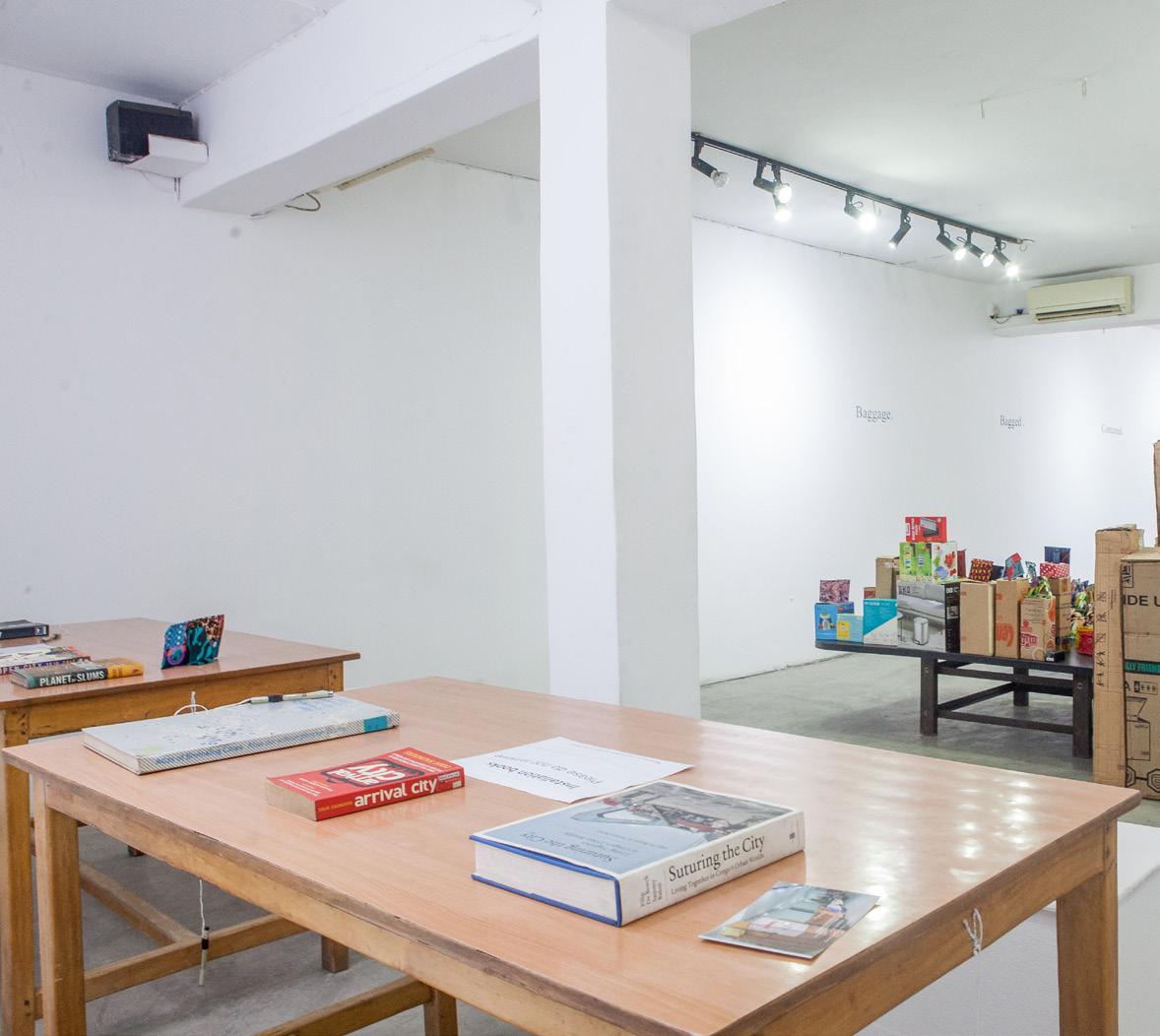
Installation view


Amarachi Okafor
The Colour of our Hearts is the Colour of our City CCA, Lagos. September 2021
Centre for Contemporary Art, Lagos
Reflecting on the past 18 months it’s hard to believe just how much the world has changed. The language we use, the fact we all have to wear face masks, the rising debate between vaxers and anti-vaxers. The hurricane that was the pandemic swept up everyone and everything in its path leaving a trail of devastation and destruction in its aftermath. The early days of the virus pushed governments to impose lockdowns that shut down cities and hid the people behind walls, houses and gated communities. As a relational species we were forced to come to terms with either being alone with one’s self or having to manage a house full of people you might love, but after being locked up with them for 24 hours a day, may or may not be planning how to get rid of them.
I often found myself mentally screaming “I am a celebrity get me out of here” (The title of a popular show in the UK, I am not a real celebrity), while
wondering how the people in the Big Brother house handled their self-imposed lock down. ‘The Colour of our Hearts is the Colour of our City’ was first exhibited not too long after the Nigerian lockdown and was, I’m sure for those that attended, a welcome break from the messaging designed to “keep us safe” but instead only serving to induce anxiety.
Anxiety occurs in response to fear and stress triggers, and for me this often manifests with my mind racing at speeds I can barely keep up with, both anticipating danger and trying to prevent it. To manage my anxious thoughts, I have (attempted to have) a mindfulness practice. Mindfulness helps me ground myself and break out of repetitive fear-based thinking, bringing me into the present moment in a non- judgemental way. Oftentimes this practice leads me to take mindful walks around my neighbourhood noticing the people, the sounds and the colours. I imagine the artist Amarachi Okafor wanting to capture this feeling through the exhibition as guests walk though her installation, stopping to notice the intricacies within her world and work.
‘The Colour of our Heart is the Colour of our City’ invites the audience to move through the space not as a spectator, but as partakers of each moment. Stopping to think through the prompts, picking up the works and placing notes in the pouches for future guests to discover. There is a dialogue between the audience and the resulting work as the spotlight moves from the installation to the individual’s perspective of their place and engagement with the city.
The first instalment of the exhibition being held in Abuja and this second exhibition in Lagos provides two sites for engagement and exploration of self within the environmental identity of the cities we occupy and inevitably do life, recognising that though we are many, inevitably we are but one. I would therefore like to encourage you to engage fully with the artist’s prompts, examining your perspectives and relationships, responding as honestly as you can be with the stranger that will experience just a glimpse of your world.


Amarachi Okafor
The Colour of our Hearts is the Colour of our City CCA, Lagos. September 2021

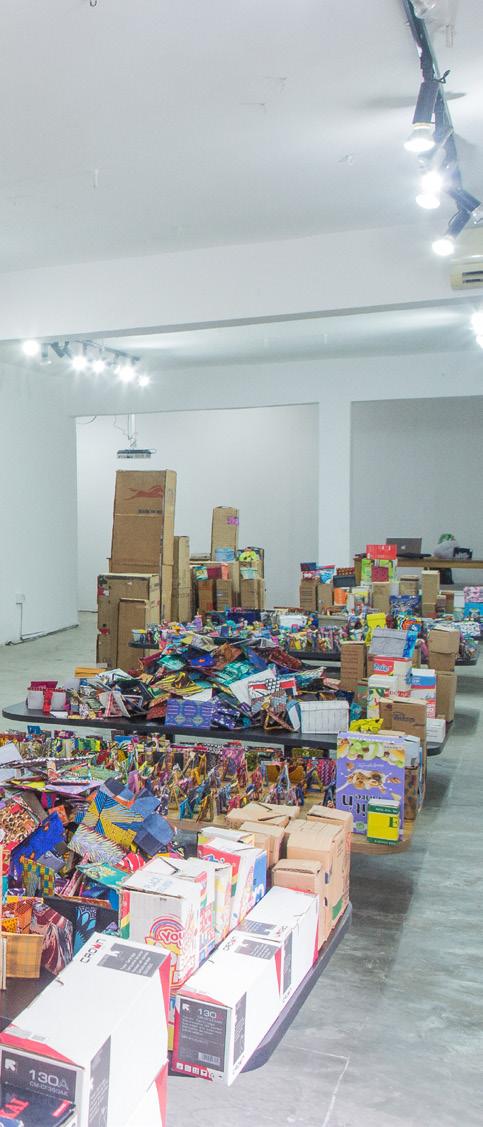
Amarachi Okafor
The Colour of our Hearts is the Colour of our City CCA, Lagos. September 2021

Installation view
Amarachi Okafor
The Colour of our Hearts is the Colour of our City CCA, Lagos. September 2021
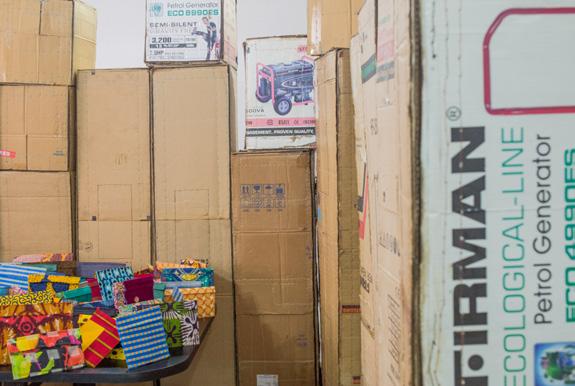


All thanks to the Almighty God.
Many thanks to my friends and family, ORIE STUDIO team and the CCA, Lagos team.
To all who wish me well and have supported me, you are my family, thank you!
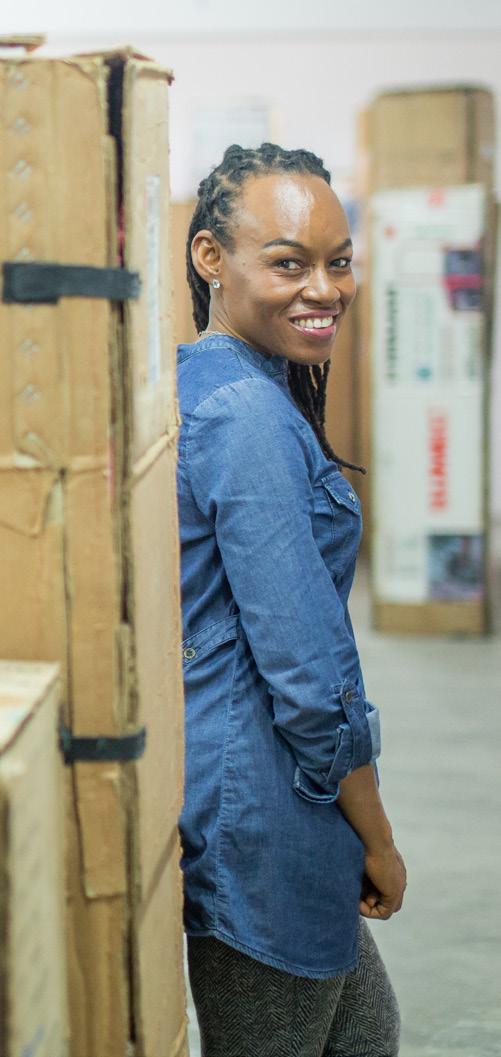
The Colour of our Hearts is the Colour of our City, Lagos City!
11th September – 25th September 2021.
Centre for Contemporary Art, Lagos (CCA, Lagos), 9 McEwen Street. Sabo-Yaba, Lagos
The Colour of our Hearts is the Colour of our City is a solo exhibition by Amarachi Okafor, that has been produced in collaboration with Centre for Contemporary Art, Lagos. This is the second version of the touring performative-participatory exhibition that is focused on us and the ways we engage and are engaged in (our) cities.
Written and edited by Amarachi Okafor, Oyindamola Fakeye, and Frank Ugiomoh
Published by ORIE STUDIO